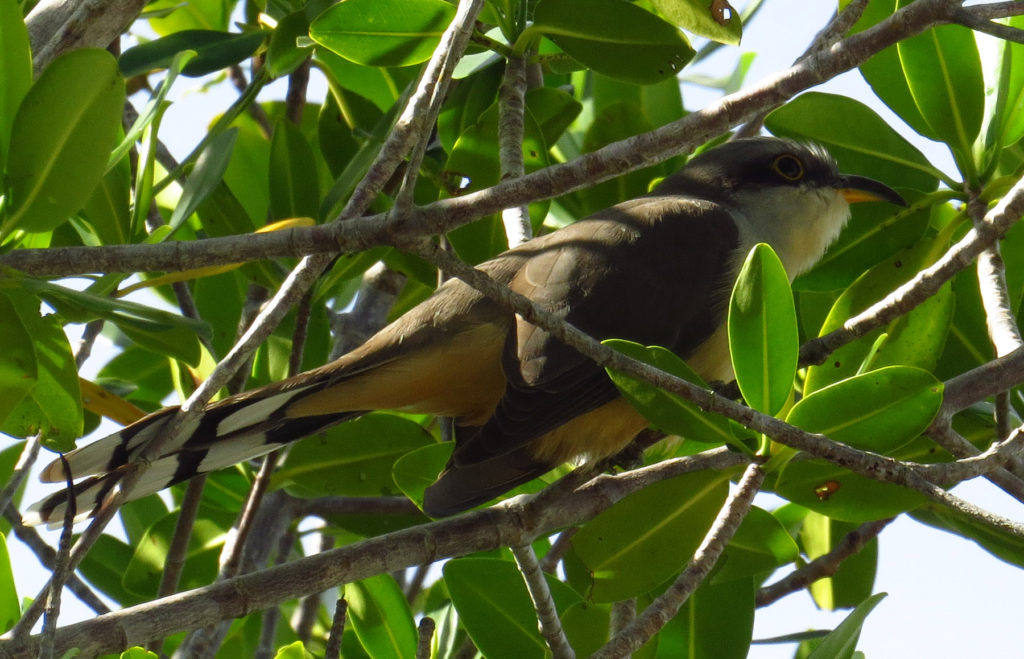Every trip to our recently purchased vacation home brings new discoveries.
We always pack our vacations full of birding and shelling, enjoying tried and true birding spots, abundant sunshine, and warmer-than-Indiana temperatures. We sprinkle liberally with the cuisine of several excellent Sanibel Island restaurants, with visits from friends, and with making new friends along the way (while enjoying a glass of wine and photographing exquisite sunsets). Just taking in the sights, sounds, and salty smells of the Gulf, planted in our camp chairs on a beach, is a respite we greatly appreciate.
Our most recent trip, the annual vacation—which for me is only two weeks—was in January, instead of our traditional February. This was a concession to becoming owners of a vacation rental property and wanting to accommodate our vacationing renters. January is still during the peak winter season, so in many ways, this trip was very similar to the preceding February ones. Two of the most notable differences follow.
After several years of birding the area, it became more and more difficult to find a “lifer” bird species for me. I dutifully followed several Facebook pages, and occasionally a birding List-serve or eBird, searching the entries for sightings of rare or unusual species, that might or might not still be in the area when we arrived. At least one Mangrove cuckoo was spotted nearby, every year for many years, for which we diligently searched; each cuckoo managed to elude us, until this year. This year’s Mangrove cuckoo was being seen in the “Ding” Darling National Wildlife Refuge, one of our favorite places to bird. One day, as we resumed our search, we came upon a small group of birders standing in the middle of Wildlife Drive. Stopping to chat, we learned the cuckoo had been seen several times in the last few days and approximately where.
As we drove up to the site, there were only two other female birders, who were scanning some vegetation beyond the waterway at the side of the road. Eavesdropping shamelessly, we could tell one had spotted a warbler and was attempting to help her companion find that bird. Suddenly, their voices changed to excited whispers and pointing. Following the direction their binoculars were aimed, we quickly found the Mangrove cuckoo as it moved from one perch to another. My lifer! The bird, of course, uttered no sound, and stayed mostly in the shadows or behind leaves. Still, we were soon joined by others, some who were looking for the same bird, others asking, “What are you looking at?” The small group who had directed us here arrived; the bird did not seem very disturbed by the dozen or so people blocking Wildlife Drive.

There was another first on this trip. On one visit to the beach at Gulfside City Park, I began to see a quick flash of the angled tip of some marine creature, ever so briefly, in the lull between the swells, very close to shore. Not quite a dolphin or a shark fin, not quite a tail, and we apparently each spotted a different one at about the same time. A brief glance of part of the underside, then a split-second look at the tail, and we realized there were actually several stingrays, presumably feeding voraciously along the underwater shelf that was only about three feet out.
I watched in delighted awe, having never seen a ray in the wild, even after all the times we had visited this very beach over the years. This species was smaller than I had imagined, although still very quick and agile. Of course, after several minutes, my scientist companion and I, the amateur naturalist, began wondering exactly which species this was. Out came our Smart phones as we searched for pictures and descriptions and ranges. Our determination? Cownose rays, to be exact, for which we found more confirming information later. We saw a smaller group on a different day; did either of us have a real camera with us either time? Of course not. But it was an appropriate time for me to learn that their numbers are believed to be increasing, that they school and migrate in large groups (sometimes thousands of individuals), and that another name for a school of stingrays is a “fever”.
Once again, this place and its wildlife amaze me, give me joy, and dispell the gray gloom of winter from my soul. I want to keep it all to myself, and at the same time, I want to shout it out to the world, “Come here! Come see!” Such a dilemma …
If you do visit, I know a place you can stay.
